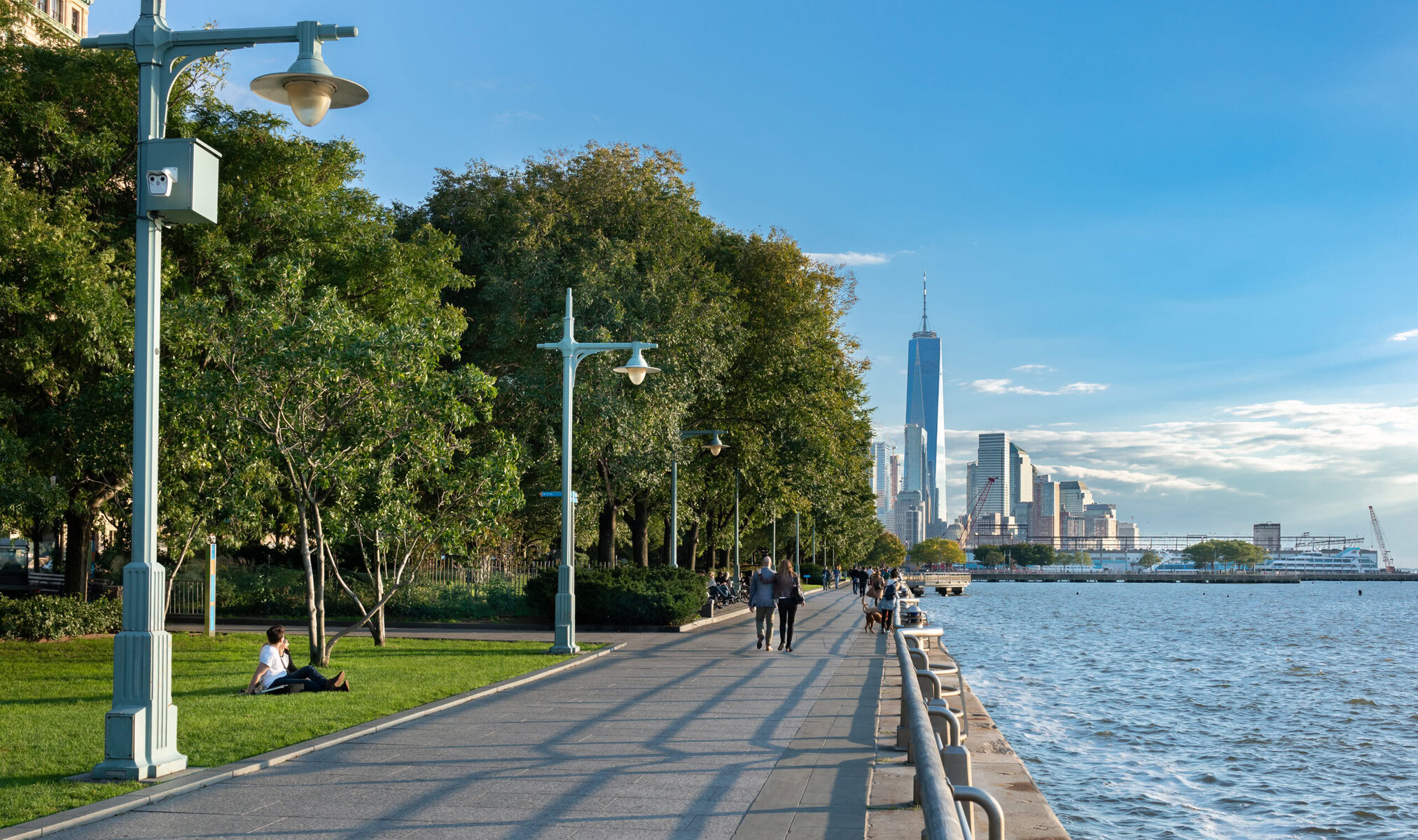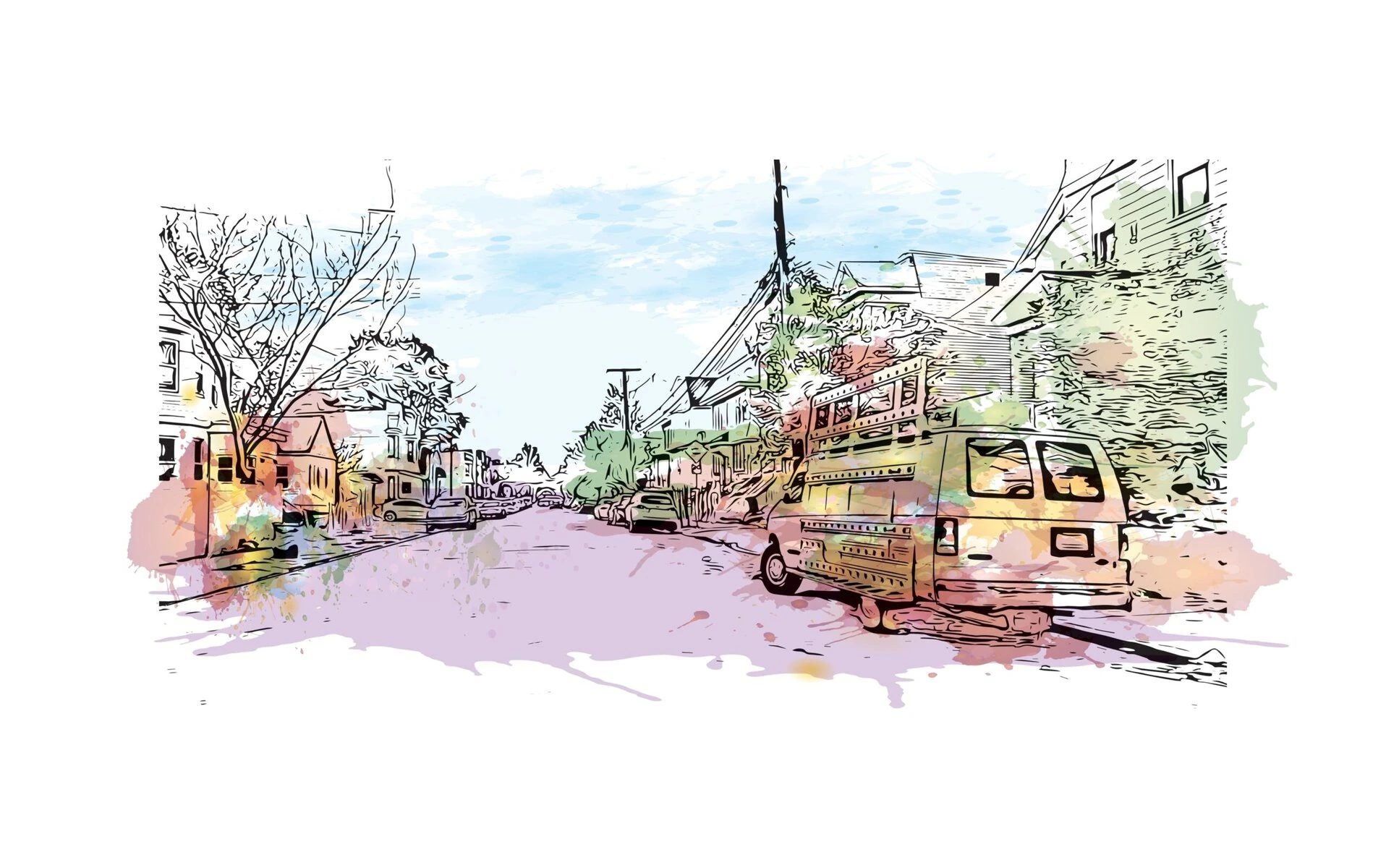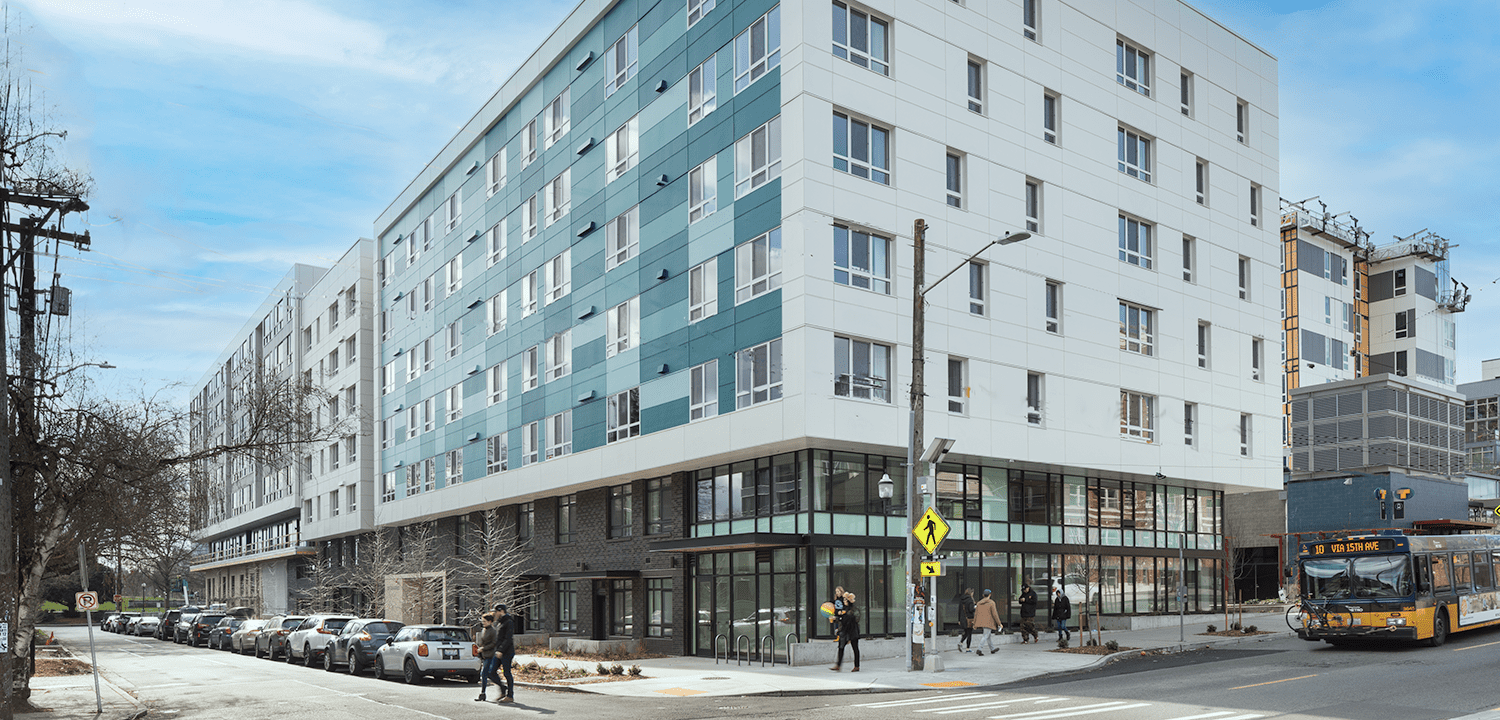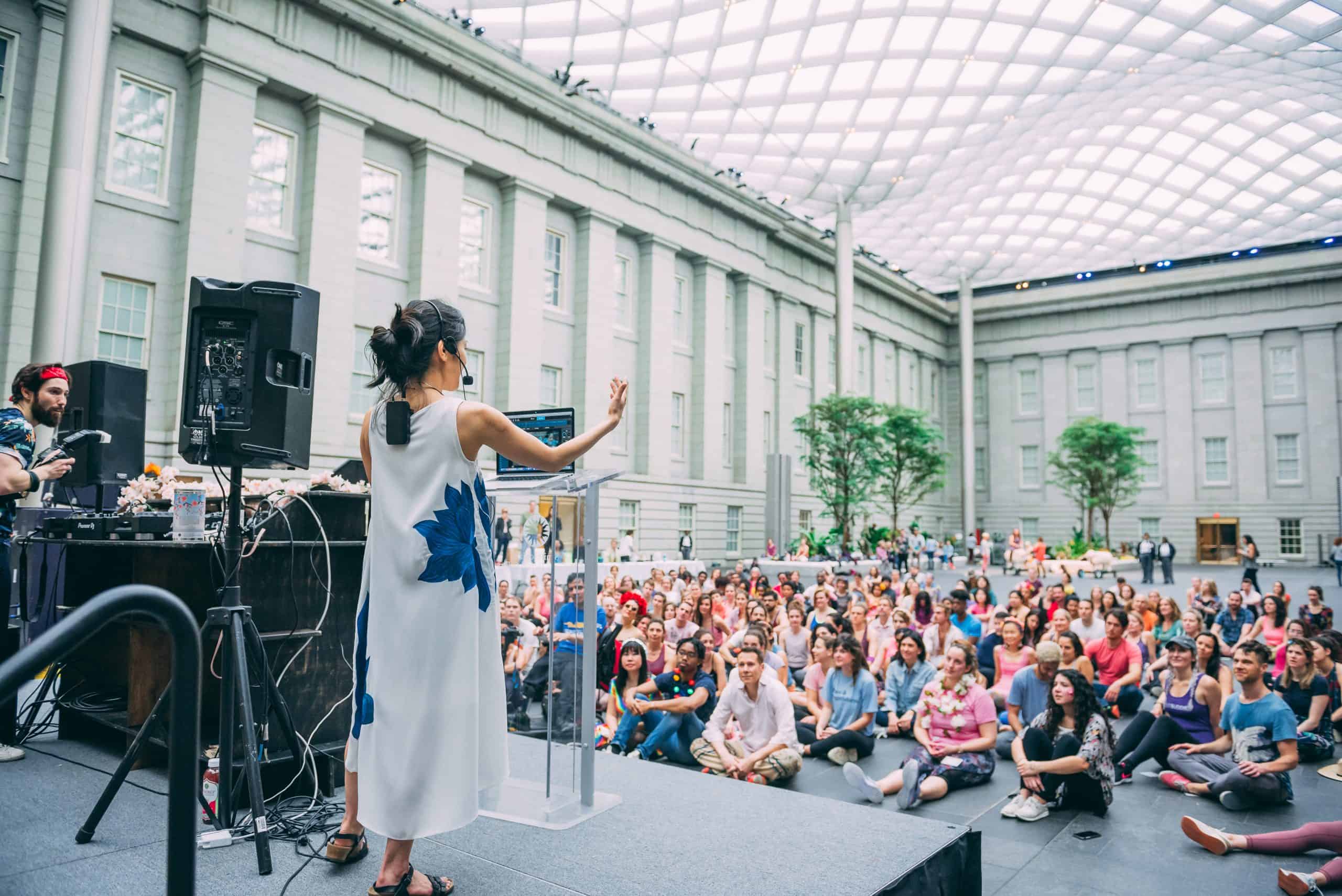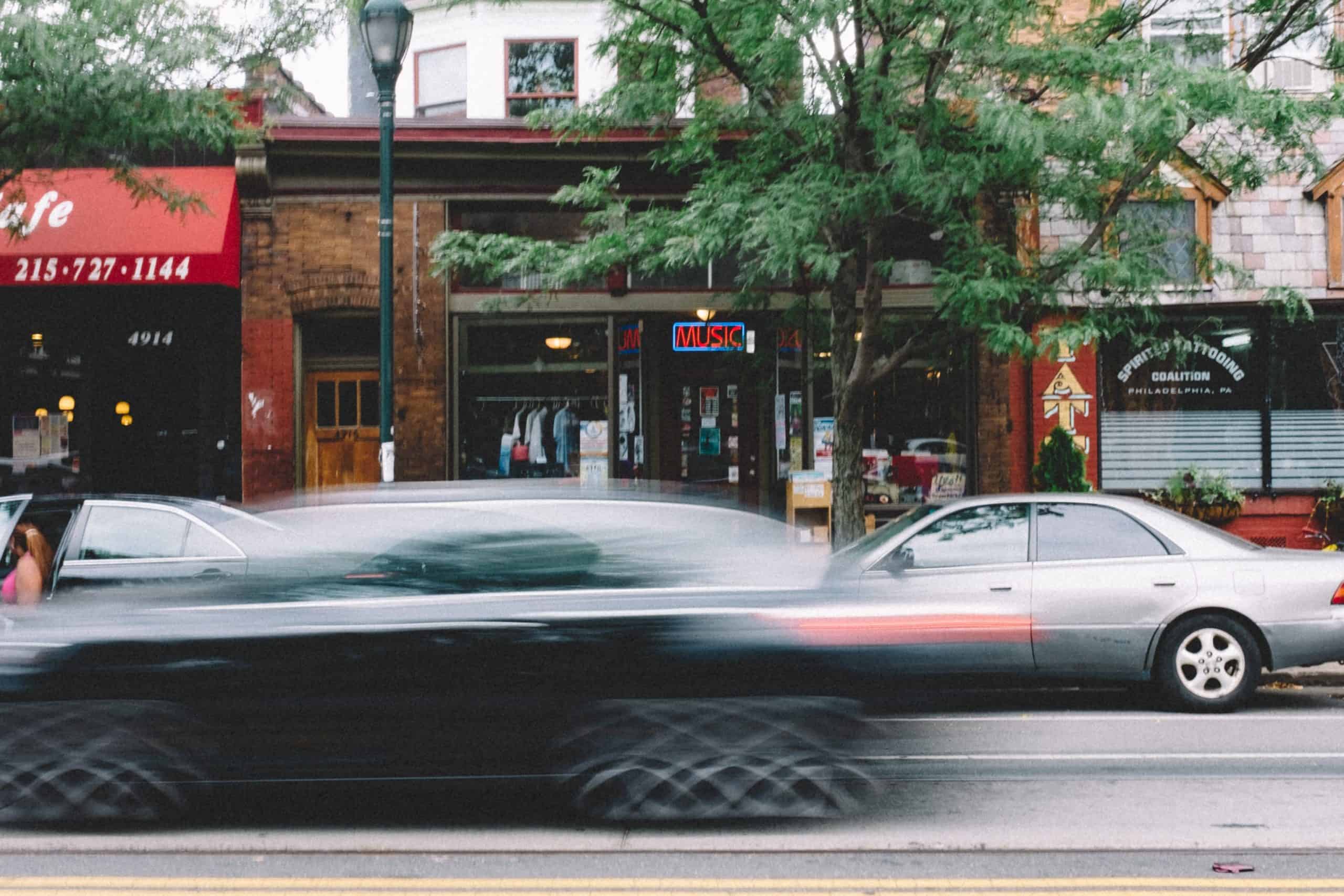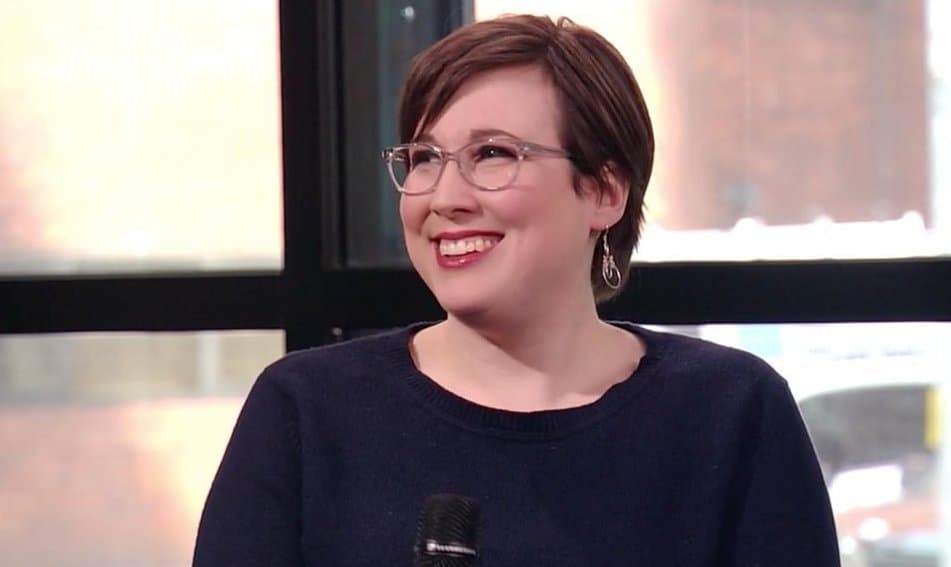Charles Moore had served six months of a minimum seventeen-year prison sentence when a play changed his life. Moore, incarcerated for a violent crime and potentially facing life in prison, signed up to see Aaron Sorkin’s drama A Few Good Men performed for the population at Sing Sing Correctional Facility, just north of New York City, in May 2001. Though he was less interested in theater than in getting out of his cell for a few hours, Moore was blown away.
“It was phenomenal,” says Moore. “And I thought that the actors [were professionals, who] had come in to perform the play for the population. Then I started recognizing folks in the building, like, ‘that guy kind of looks like he was in the play.’ So I asked one of my friends, and he told me, ‘Oh yeah, they got a theater group here called RTA.'”
Moore had no desire to be an actor; he just knew he had to get involved with this group somehow. He put himself on the waitlist, and in 2004 was selected for Rehabilitation Through the Arts’ (RTA) theater program, where he proved invaluable in an administrative role, navigating the endless red tape and organizational tasks required for every production. After his release in 2016, Moore was asked to join the New York-based nonprofit as a full-time employee. This year, he returned to Sing Sing — to produce the musical 1776 for RTA.
In our achievement-oriented society, we are accustomed to thinking of the arts as something “extra,” a hobby or entertainment, rather than something essential.
The truth is that art, music, dance, writing and theater can have profound transformative powers in a prison setting. Countless studies show that prisoners like Moore who participate in a program like RTA or art therapy are likely to experience improved mental health and fewer disciplinary infractions. Regardless of age, gender identity, or time served, those prisoners will become more likely to complete an education in prison, and much less likely to commit another offense after release. Art has been shown to connect with prison populations in a way that traditional therapy sometimes cannot, and the effects ripple outward to create a more effective prison, and ultimately, a safer society.
If volunteers equipped with just paintbrushes or instruments can enact such dramatic change, the question is obvious: why are state and federal governments neglecting such an affordable, effective means of prisoner rehabilitation?
Healing a broken system
It may surprise most people to learn that rehabilitating prisoners, once central to prison policy, is not actually an official objective of the U.S. prison system. The goal of transforming criminals into functional members of society was pushed aside by Congress in The Comprehensive Criminal Control Act of 1984, which stated that “imprisonment is not an appropriate means of promoting correction and rehabilitation.”
As both government policy and public perception shifted to the idea that prisons were strictly punitive, the number of incarcerated citizens began to grow at an unprecedented rate. Over a forty-year period, the number of U.S. citizens in prison increased by 500 percent — a number that did not correspond with the crime rate, which has declined dramatically since the 1990s.
Even with a dip in the incarceration rate in 2016, the United States has the highest mass incarceration rate in the world, with 2.2. million people behind bars. (This number doesn’t even account for the additional 840,000 people on parole and 3.6 million people on probation.) Nearly half of U.S. prisoners are serving sentences for nonviolent drug offenses. And among those prisoners who are released, 49 percent will be arrested again, most of them within two years.
Video below: a glimpse of another RTA production of the same play that inspired Moore to join RTA back in 2001
As awareness of the broken prison system has increased, popular opinion and policy have begun to gravitate back towards rehabilitation. Even the Department of Justice has acknowledged that it’s time to “rethink mass incarceration,” declaring in its Strategic Plan for 2014-2018 that “we cannot prosecute our way to becoming a safer nation.”
Within the prison system, programs that promote higher education and drug treatment are recognized as effective for reforming convicted criminals. But the arts remain overlooked and underfunded as a rehabilitation tool, despite persuasive data.
Consider that recidivism (when prisoners commit further criminal offenses after release) among RTA members is 12 times less than the national average. Or that 68 percent of participants in the California state program Arts in Corrections say that making art has lowered their stress levels and made them happier, while 64 percent have experienced reduced racial tension in arts classes. In one study of art therapy in Florida women’s prisons, more than 75 percent of participants said the classes helped them deal with upsetting memories and past traumas, likely connected to the reasons for their incarceration. And then there are the results that can’t be measured, but are undeniable — like the capacity of the arts to give prisoners back their humanity.
Painting light in the darkness
“Once you’re incarcerated, you go into a deep depression,” says Moore, who has both experienced this firsthand and witnessed it as a volunteer. “Being in prison, you think that you let your family down, you think that you let your community down, and you just think that you’re the low of the low. When you get involved in the arts, you’re able to show the goodness of yourself.”
Mental health problems are rampant in the prison system. According to a 2017 report from the U.S. Department of Justice, half of all prisoners and a third of all jail inmates have a history of mental health disorders, with major depressive disorder and bipolar disorder being the most common. Inmates with a serious mental illness are more likely to present behavioral management problems, serve longer terms, and require additional staffing; they’re also more likely to die by suicide. Yet a 2015 report from the Urban Institute determined that only one in three state prisoners, and one in six jail inmates, have received mental health treatment since being admitted.
While access to therapy, medication and other interventions is crucial for inmates’ mental health, participation in the arts can also have a profound effect on depression and other disorders. Professor Dave Gussak, a leading researcher on art therapy in prison populations, has found that participating in art therapy (therapist-led art classes that use the creative process to promote psychological healing) can significantly reduce symptoms of depression among inmates. According to Gussak, the arts are able to reach prison populations in ways that traditional mental-health interventions sometimes cannot.
“You’re talking about an environment where any type of disclosure of weakness and vulnerability and need, can be taken advantage of by others,” says Gussak. “But the art allows us to work behind the mask, allows therapy to happen, allows expression to happen and identity to reform without challenging that notion of dominance.”
Singing verses, building bridges
“My best friend in RTA is an atheist and I’m a born-again Christian,” marvels James Henry Fulton, one of the Sing Sing residents in the cast of 1776. For incarcerated citizens, sticking close to people who resemble you (by race, religion, gang affiliation, hometown, amount of time served, etc.) is a common way to navigate prison life. In many cases, these subgroups have little contact with one another. That changes when diverse prisoners have to work together on a creative project, such as performing a play or painting a mural.
One long-term study of a music project in the U.K., in which prisoners learned to play instruments and perform traditional Indonesian music, found that prisoners’ enhanced social skills, communication skills, and capacity for empathy were still apparent six months after the program ended. Another program, which brought movement- and drama-based anti-violence training to German prisons, was shown to decrease prisoners’ potential for immediate aggression while increasing their abilities to empathize and express their own needs.
“It can be frustrating,” admits Freddy Medina, another 1776 actor, when asked about rehearsing with the rest of the show’s ensemble. Medina, who plays antagonist John Dickinson in the historical musical, chose that role especially because it allowed him to “express my emotions without holding back.” But when it came to his relationships with other cast members, Medina had to learn to keep himself in check.
Given the long rehearsal hours, the unpredictability of prison life, and the wide range of personalities and temperaments embodied by the cast and crew, emotions inevitably bubbled to the surface — but through RTA, Medina has learned how to navigate them in a healthy way. “The rehabilitation part of this process has been real to me,” he says.
This skill is especially vital for the substantial number of prisoners who have been incarcerated since they were teenagers, and have not had experience interacting with the outside world as adults. By teaching emotional control, communication skills, and relationship-building, arts programs help them gain maturity and increase their odds of success on the outside.
Creating new identities
“We’re working in environments where the inmate populations are objectified and dehumanized, and they’re given numbers and uniforms to keep them under control,” says Gussak. “The problem is once they get out, they maintain that label of ‘inmate’ or ‘former convict,’ and that’s the identity they need to live up to.”
But creating art helps prisoners to see past their immediate experience of incarceration and re-imagine themselves as something more than criminals.
This shift in perspective opens up a world of opportunity. Dayvon Underdue, a 28-year-old Sing Sing resident and RTA member, was stunned to realize that audience members who saw him in plays remembered him afterwards, and were emotionally affected by his performances.
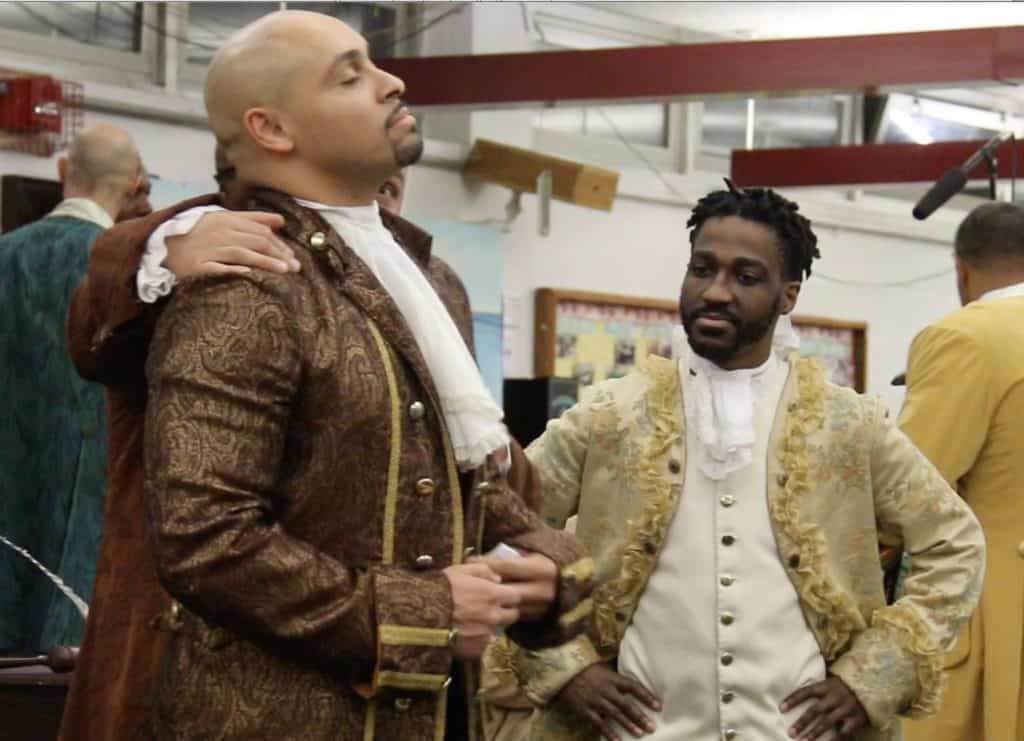
“That’s when I understood, I can really do things to captivate people, and I can use that captivation to change them,” says Underdue, who plans on teaching the arts to at-risk kids when he is released. “It made me feel different. It made me feel free.”
Not only does performing help the prisoners find their own identity, but it helps corrections officers, whose job often entails treating inmates interchangeably, recognize and acknowledge them as individuals.
“Arts in prison help us transcend this experience [of prison] and just allow ourselves to be human beings,” says 1776 cast member Jose Perez. “They’re not guards, we’re not prisoners. You get ‘thank you,’ ‘I appreciate you’ from a guard — you don’t really get that in any other setting.”
Perez, like many RTA members, has been juggling play rehearsals with classes as he pursues a master’s degree. Numerous studies have shown that prisoners who participate in arts programs, motivated by what researcher Larry Brewster calls “enhanced self-confidence,” are more likely to complete an education in prison: one of the surest markers of success on the outside. Once their sentences end, alumni of arts programs are also less likely to violate parole and more likely to stay out of jail in the future. Of RTA participants in particular, fewer than 5 percent have returned to prison three years after release — compared to the national average of over 60 percent.
Desperately seeking funds
Despite ample evidence that the arts make a profound difference in prisoners’ rehabilitation, reliable funding for prison arts remains scarce. Organizations like RTA are equipped to serve only a small fraction of the prison population, meaning that interested prisoners can spend years on a waitlist. Most prison arts programs are volunteer-driven, and rely on a patchwork of grants, donations, partnerships, and university funds, along with state funding when available. Six federal prisons have an artist-in-residence program sponsored by the National Endowment for the Arts, an agency that is perpetually on the chopping block in federal budget plans. There is currently no federal agency that promotes the benefits of arts in prisons, and few state-sponsored programs with adequate resources to meet the needs of every facility.
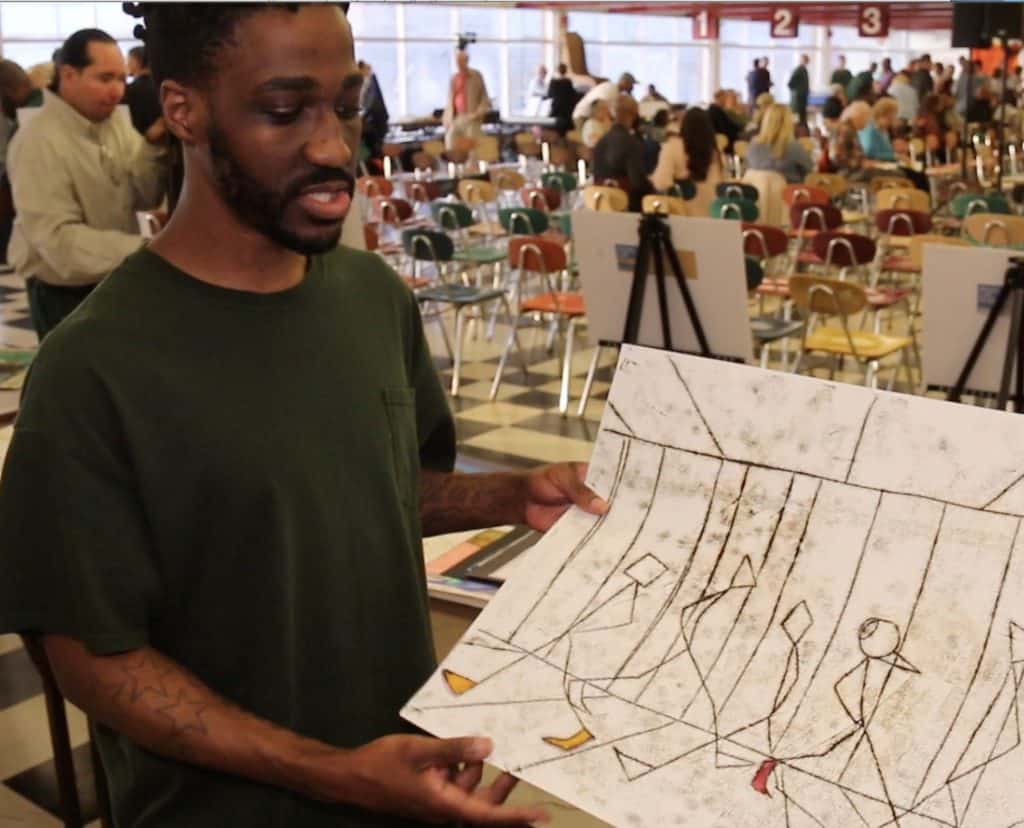
There is one promising exception: California. An initiative called California Arts in Corrections (AIC), piloted in 1977, was long considered a model for programs in other states. A groundbreaking 1983 study by Larry Brewster determined that California’s AIC program actually saved the state $65,732 annually, bringing $228,552 worth of measurable benefits at an implementation coast of $162,790. In spite of this cost-benefit analysis, the AIC fell victim to state budget cuts in 2003, and was eliminated entirely by 2010.
Four years later, however, the California legislature authorized a $2.5 million pilot program to reinstate Arts in Corrections. Once again, Brewster was hired to evaluate the program, and his study drew similar conclusions to the one 30 years earlier: the arts made a quantifiable difference in prisoner rehabilitation. Arts in Corrections has now been officially reinstated, bringing arts programs to every single adult correctional institute in California, serving as a model for other state-led programs.
Creating for the common good
Attempting to bring change to the U.S. prison system, no matter how small, can be a massive undertaking. The creators of these arts programs often spend months or years in bureaucratic purgatory — dealing with proposals, contracts, security clearances, and so forth — before they even get through the gates. But increased awareness of prison arts, and the benefits they can offer with even minimal resources, means that more doors are opening.
“Change is happening,” says Gussak. “People are adopting these programs. I’m getting calls from different agencies all over the United States, from artists, facilitators, and administrators from prisons, that say, what can we do to bring this into our system right now?”
Given the number of Americans who will be incarcerated at some point in their lives, the profound rehabilitation offered by prison arts can benefit all of us.
“In New York State, there’s only about 2 percent of the population that is doing life in prison,” says Moore. “So I think that it’s best to invest in the lives of those 98 percent, so they can learn new skills, be taxpaying citizens, and be a good neighbor when they pass your children on the street. Because eventually, they are coming home.”

